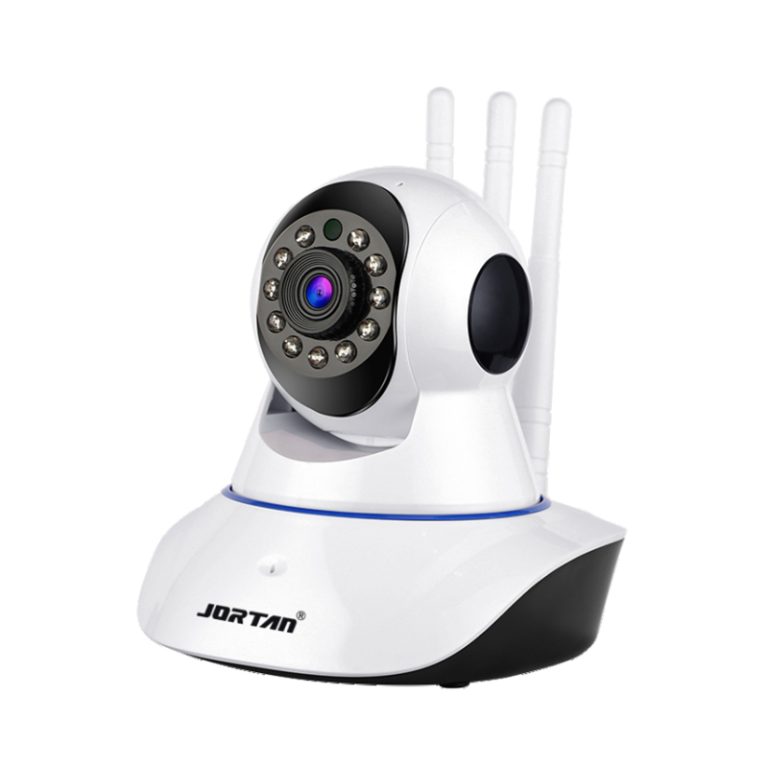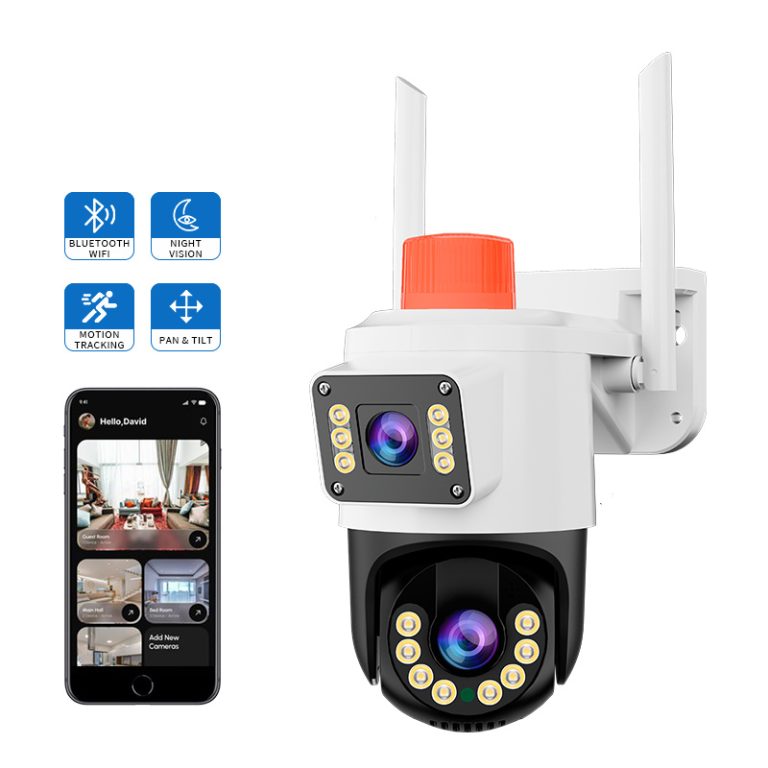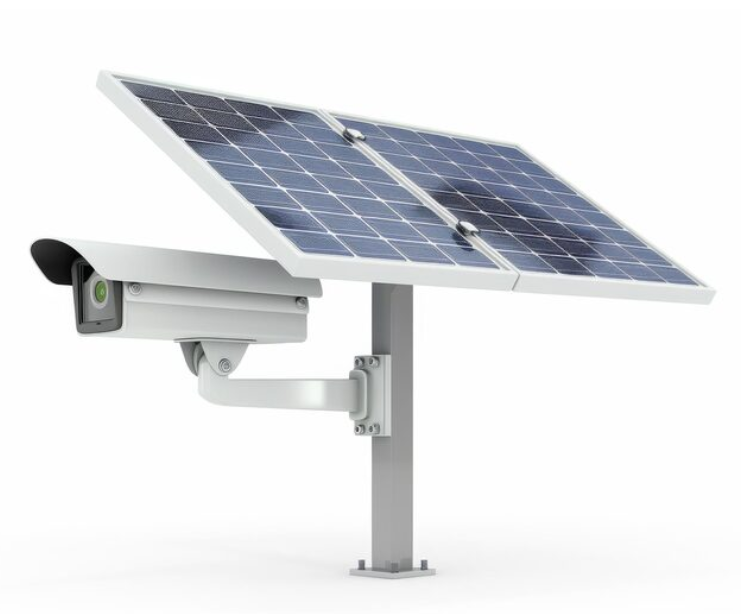The modern surveillance technology depends on network IP CCTV cameras to function as essential components for residential and commercial security systems. The cameras provide high-definition video recording and real-time data transmission through different network systems. The complete utilization of these cameras requires understanding their fundamental elements which support uninterrupted data transfer and efficient compression and secure communication.
ZheJiang Jortan Electronic Technology Co., Ltd. stands as a trusted manufacturer which unites modern technology with strict quality control standards. Since its founding in 2013 the company has evolved into a top position within the smart surveillance market. The company provides complete services from development to after-sales support through its single facility which offers OEM/ODM solutions with software adaptation and branding options and complete manufacturing from mold injection to final assembly. The company provides businesses with a dependable partnership for expanding or customizing their surveillance systems through its expertise in security equipment and intelligent camera solutions.

What Are the Core Components That Enable Data Transmission in Network IP CCTV Cameras?
The stable transmission of high-quality video through networks depends on multiple hardware and software elements which operate together as a system in IP CCTV cameras.
Integrated Chipsets and Processing Units
The processing core represents the fundamental element of every network IP CCTV camera system. The majority of these models employ dual-core 32-bit Digital Signal Processors (DSPs) which include XM530V200 and XM650V200. The chipsets provide pure hard compression and watchdog functionality which enables stable operation during non-stop usage. The chipsets execute two main functions which include video stream encoding and sensor input management for image processing.
Network Interface Modules and Protocols
Network modules provide Ethernet and Wi-Fi connectivity as their main interface options. The interfaces consist of 10/100M adaptive RJ45 ports and 2.4GHz Wi-Fi modules that follow IEEE 802.11b/g/n standards. The WIFI antenna interface on these models enables wireless network connectivity which allows flexible installation in both indoor and outdoor environments while eliminating the need for complex cabling.
Compression Standards Like H.265 for Efficient Streaming
Modern IP cameras use H.265AI video compression because it decreases file sizes by 50% compared to H.264 while delivering equivalent image quality. Users can adjust the code stream between 0.1M and 10Mbps to match their network bandwidth requirements with their desired resolution.
How Do Network IP CCTV Cameras Transmit Data Over Different Infrastructures?
Surveillance systems need flexible transmission capabilities to function properly in different environments that range from residential areas to industrial facilities.
Wired Ethernet Transmission Using PoE Technology
The Ethernet-based transmission method provides reliable network connections while keeping interference to a minimum. The Power over Ethernet (PoE) feature in many IP cameras enables easy installation because it transmits power and data through one cable which works best for dependable fixed installations.
Wireless Connectivity Through 2.4GHz Wi-Fi Networks
The Wi-Fi-enabled models enable users to place them anywhere without compromising their performance capabilities. The IEEE 802.11b/g/n wireless standards function at 2.4GHz frequency to deliver acceptable range performance while supporting most router connections.
Hybrid Solutions Supporting SIM-Based LTE Transmission
The LTE module integration in advanced models enables internet access in areas where fixed-line connections do not exist. The hybrid solutions use SIM cards to provide mobile-based connectivity which makes them appropriate for short-term operations and mobile facilities such as construction sites.
Why Is Video Compression Critical in Network IP CCTV Systems?
Video compression functions as a critical optimization method which enhances storage efficiency and transmission speed and playback quality.
Reducing Bandwidth Consumption Without Sacrificing Quality
The implementation of H.265AI encoding standards in modern IP cameras enables both reduced bandwidth usage and high-resolution video output which becomes essential when multiple feeds operate on restricted network systems.
Enabling Real-Time Remote Monitoring and Playback
Real-time streaming becomes possible through efficient compression which prevents buffering delays when using mobile networks for immediate incident response.
Supporting Long-Term Storage on Cloud or Local Devices
The compression process minimizes file dimensions which enables users to store files for extended periods on TF cards and cloud platforms at reduced storage expenses. The system enables users to store files locally on TF cards up to 128G while providing cloud storage options for backup and easy access.
How Do Jortan’s JT-9697QJ and JT-9999PRO Optimize Data Handling?
The JT-9697QJ and JT-9999PRO represent two exceptional models which showcase modern design in network IP CCTV cameras through their advanced features for complete surveillance coverage.
Dual-Lens Architecture for Enhanced Visual Coverage
The JT-9697QJ uses dual lenses to provide 355° viewing coverage which allows complete area surveillance without any hidden spaces. The JT-9999PRO uses two lenses (3.6mm and two 6mm) to achieve night vision distances of up to 30 meters.

Support for H.265 Encoding and Intelligent Motion Detection
The two systems employ H.265 compression technology with motion tracking and face recognition capabilities which minimize false alarms and maximize bandwidth efficiency.
Seamless Integration with Yoosee and ICSEE Mobile Applications
The JT-9697QJ allows Yoosee app access while the JT-9999PRO operates with ICSEE for real-time monitoring through iOS and Android platforms which provide mobile access without sacrificing control capabilities.

What Role Does Edge Computing Play in Modern IP Camera Systems?
The implementation of edge computing technology has transformed surveillance system visual data processing through its ability to move intelligence operations directly to camera locations.
Onboard Analytics for Motion Detection and Face Recognition
The onboard analytics capabilities of modern DSPs allow human detection and object tracking within the camera unit which makes basic decision-making independent of external servers.
Minimizing Latency by Processing at the Source
The edge processing method reduces latency because it eliminates the need for raw footage to travel between central servers before triggering alerts or actions which becomes essential during emergency situations.
Improving System Scalability and Reducing Central Server Load
Edge analytics distribute computation across multiple endpoints instead of depending on backend infrastructure which results in better system scalability and reduced central node bottlenecks.
How Is Data Security Maintained During Transmission?
The protection of sensitive video feeds requires top priority when these feeds transmit through open networks or when they are stored in remote locations.
Encryption Protocols to Protect Video Streams
Advanced encryption protocols protect live streams from unauthorized interception during transmission which maintains privacy even when using public internet connections.
Secure Authentication Mechanisms for Remote Access
The mobile applications Yoosee and ICSEE use secure login systems with two-factor authentication (2FA) which restricts access to authenticated users from any location.
Firmware Updates from Trusted Manufacturers Like Jortan
All products receive thorough testing before shipping but manufacturers like Jortan maintain equal dedication to firmware updates which serve as essential security patches for vulnerabilities.
In What Ways Does Jortan Support Customization and OEM/ODM Services for Network IP Cameras?
The company achieves its goal of brand identity alignment through product design customization which enables market-specific functionality adaptation that Jortan performs exceptionally well.
Full-Process Production Including Injection Molding and Assembly
The company runs various SMT assembly lines and injection molding machines which allow them to maintain complete product quality control throughout PCB fabrication and final assembly operations.
Customized Software, Packaging, and Branding Options
The OEM services include logo customization and packaging design and color schemes and software reengineering upon request. The services enable distributors to establish unique market positions in competitive business environments.
Technical Support and After-Sales Service Tailored to Client Needs
The technical support team provides online assistance and one-year warranty protection (excluding human errors) to deliver extended value to customers who need to monitor extensive areas.
FAQ
Q1: How do edge computing features benefit surveillance operations?
A: They allow motion detection or face recognition tasks directly within the camera unit itself—reducing latency and server load.
Q2: Are mobile apps available for remote monitoring?
A: Yes; Yoosee supports models like JT-9697QJ while ICSEE is compatible with JT-9999PRO—both enabling live monitoring via smartphones.
Q3: What type of customization does Jortan offer?
A: Services include logo printing, packaging design changes, custom software features—and full OEM/ODM production capabilities from mold creation to final assembly.









